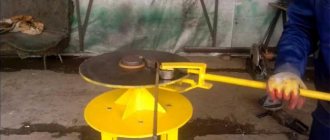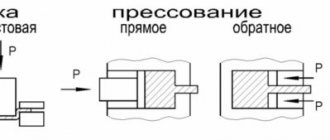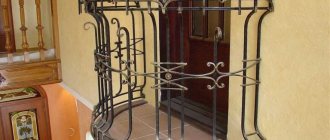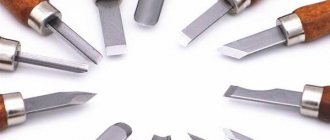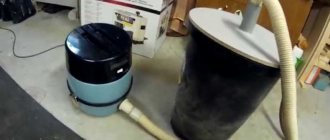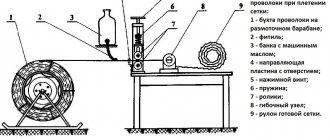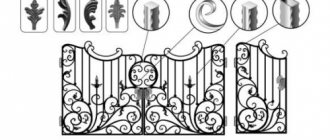The technology of manual metal processing goes back thousands of years. There are two main types. This is cold or hot forging. To process metal using the hot method, you need a forge or melting furnace and a properly prepared room. And the price for these devices is high.
Cold forging equipment can be placed in any suitable location, such as a home extension. If desired, some of the machines can be made independently. This circumstance significantly reduces the costs of organizing production. In addition, photos of the machines are easy to find on the Internet.
Cold forging machines: advantages of their use
The main advantage is that it is quite easy to make a cold forging machine with your own hands. And also, if necessary, you can do without electric drives.
In addition, working on such machines has the following advantages:
- fast learning;
- ease of operation;
- low labor costs;
- possibility of producing a series of parts;
- creating unique designs by combining basic elements;
- safety.
Exploitation
In order not to damage the material and equipment, you need to know a number of features. Blacksmiths give the following recommendations:
- Before starting work, you need to check the integrity of the fastening elements.
- Moving parts must be periodically lubricated with engine oil. This will ensure reliable operation of the equipment.
- To make it easier to bend metal workpieces, you can preheat the material.
- When bending parts, the movements should be smooth. Homemade machines are not as reliable as purchased equipment.
- You cannot hope for high accuracy of a homemade unit.
After welding the metal structural elements, you need to clean the seams.
Coat them with an anti-corrosion compound. Individual parts of metal structures are produced using homemade equipment for cold forging. The blacksmith places them on the workbench as they will be located in the finished product. After that, he must connect them using a welding machine. Homemade machines for cold forging are popular in private workshops and garages. Blacksmiths use them to make various forged products of complex shapes. Assembly does not require any additional skills. It is enough to make a drawing, prepare materials, tools, and carry out step-by-step assembly.
Types of machines
There are several main types of machines used in cold forging of metal:
- snail;
- torsion bar machine;
- gnutik;
- wave;
- press.
This is the minimum set of machines to start working with workpieces. And also you won’t be able to do without an angle grinder (angle grinder) and a welding machine.
In addition, devices such as a globe, a flashlight or a volumetric volume are often used in production.
Products and elements
Each individual cold forging element is manufactured on an individual machine or equipment specially adapted for this purpose. Spirals and curls - on the “Ulitka” machines, various arcs - on the “Gnutik”, “Obemnik” machines, pipe benders, etc. Only when assembled by the designer into one single complex in the finished product do they represent a work of art.
Transparent fence, cold forging. Photo Integral
This is how original fences, window grilles, gazebos, home furnishings and many other items are obtained, decorated with elements from the cold forging arsenal. Photos of various items are collected in a separate article; illustrations demonstrate the variety of products produced using the cold forging method.
Finished products and elements can be selected according to your choice and purchased on the websites of manufacturers and sellers, which are collected in the appropriate sections.
Which machines are the most important?
Almost all fixtures used in the cold forging process are installed on the two main machines as add-ons.
A globe, flex or volumetric tube is placed on the base of the cochlea.
The flashlight device is mounted on a torsion bar machine.
Tools and equipment
Depending on which forging technology is selected, the list of equipment used changes. Machines for artistic forging:
- press;
- twister;
- snail;
- flashlight;
- globe;
- gnutik;
- wave.
This equipment is used when applying the cold processing method. When hot processing, the main devices and tools are:
- bugle;
- anvil;
- blacksmith hammer;
- forceps;
- hammers for artistic processing.
We must not forget about fuel for the forge. When heating metal, you need to take care of fire safety and good ventilation. A fire extinguisher must be present in the workshop, and you must work using protective equipment to avoid burns.
Device for bending metal elements “Snail”
Do-it-yourself cold forging is impossible without the use of this machine. It is used to make rounded patterns from a profile pipe or rod. The resulting pattern elements are curls or volutes.
The workpiece is shaped by winding it onto a template using hands or levers.
In more complex designs, the workpiece is bent using a jig attached to the shaft axis.
You can buy such a machine or make it yourself.
Brands: Man, Azhurstal, Levsha, Profi, Master and others
Competition in the cold forging equipment market is growing. It is increasing due to the production of more technologically advanced Russian machine tools.
- The MAN Production Association in Yekaterinburg is constantly expanding the Master series of machines; each type has an individual feature. Together they create the possibility of producing the widest range of forging elements.
Electro-hydraulic press Master-Blacksmith. Photo ForgingPRO
- Chelyabinsk is distinguished by a wide range of manufactured machines and equipment. The equipment is reliable and has a long service life.
Forging machine Azhur-Universal. Photo ForgingPRO
- Ulyanovsk specializes in equipment for bending profile pipes. A distinctive feature of the machines of the “Pro” series is the application of a “chopped edge” texture, the creation of crow’s foot creases at the end of the workpiece without heating, and the production of decorative U-shaped and V-shaped grooves.
These Russian companies successfully compete in the mid-price niche with the famous Chinese brand Blacksmith.
Do-it-yourself snail machine for cold forging
Manufacturing a machine consists of several stages:
- Drawing. When drawing up a drawing, it is necessary to strictly maintain the proportions of all parts. The gap between the central axis and the stop should be 3-4 mm wider than the workpiece. Then the finished part can be easily removed from the machine.
- A pipe with a diameter of 30 mm or more is welded in the center to a steel plate made of a sheet with a thickness of at least 3 mm. A central stop is attached nearby to fix the beginning of the workpiece. Then a metal strip equal to the width of the workpiece is welded to it, bent in a spiral at the required angle.
- The device is fixed to the frame. It is best to secure it with bolts so that it can be easily replaced if necessary.
- In order to facilitate the process of bending the workpiece, a handle is welded to the device. It is attached on the opposite side of the workpiece so that it does not interfere with installing and removing parts.
To make any cold forging machine yourself, you will need the following tools:
- welding machine;
- drill;
- grinder (angle grinder) with cutting and grinding wheel;
- drills of various diameters;
- metal crown;
- magnetic square;
- compass;
- vice.
You should start working after all the tools are available.
Snail with ploughshare
A ploughshare is a strip of metal bent to the shape of the desired part. The template according to which the curls will be made. Usually the ploughshare is made removable, since the curls are made according to individual sizes for each product.
Snail with lever
In the case of spruce, you simply need to twist the workpiece into a spiral, using a snail with a lever. The part is attached between the main shaft and the stop and, using a lever attached to the frame, the required number of turns is wound. The longer the lever, the less force must be applied to bend the workpiece.
Characteristics
Without heating, using the cold plastic deformation method, it is recommended to bend profile pipes with a square side of no more than 80 mm .
Please note! Since wall thicknesses affect the forming process, it is necessary to carry out a technological test to maintain the integrity of the pipe.
Manual bending machine BLACKSMITH M3-G. Photo 220Volt
Pipes with a square side size of up to 30 mm are bent on manual machines. To increase the productivity of machines, group bending of profile pipes stacked next to each other is used. The width of the row depends on the design of the machine and its power.
Machine components and required tools
To manufacture the machine you will need the following materials:
- profiled I-beam;
- vice (2 pcs.);
- steel sheet at least 4 mm thick.
Required tools:
- welding machine;
- Bulgarian;
- level;
- roulette;
- drill.
Manufacturing
A vice is rigidly attached to an I-beam of the required length on one side. For fastening it is best to use welding. And also, before installation, a steel sheet is welded onto the I-beam. This will help avoid deformation of the part during the tightening process.
Mobile system
It is assembled on the side opposite to the fixed vice. A vice is installed on top, which is equipped with a movable central part.
It is important that the vice on both sides of the I-beam is strictly in the same plane.
Instead of a lever, a wheel (steering wheel) is welded to the vice. The larger the diameter, the less effort will be required to manufacture the part.
One end of the workpiece is clamped into a fixed vice, the other into a rotating element. Using a steering wheel, the workpiece is twisted into a spiral with the required number of turns.
Hot Forging Equipment
If we compare the cold and hot forging methods, we can immediately say that the first method requires much more skill from the worker, the presence of some artistic skills and, of course, the ability to work with a set of necessary tools.
Hot Forging Equipment
Forging of the material occurs after it is preheated in a forge furnace. It's called a forge. The forge is equipped with equipment for forced air supply. Heating is carried out to a given temperature and then transferred to the anvil. This is a metal plate on which impact processing of a heated workpiece is carried out. It is performed using hammers and sledgehammers of different weights. One worker, with a light hammer, strikes the desired place, and the second, armed with a heavy hammer or sledgehammer, strikes a strong blow to the designated place. After the workpiece has cooled, it is again loaded into the oven for heating. All movements of the part during its processing are performed using pliers with long handles.
Hand hot forging
In addition to the above-mentioned basic tools, during hot forging, many special tools are used that allow cutting hot metal and forming complex surfaces during hot forging of metal.
Forge
To heat the workpieces, furnaces are used, which are called forges. Its design includes several components. In particular:
- barrel made of fire-resistant material;
- hearth, with built-in grate;
- air supply and exhaust systems;
- working window through which long workpieces are fed;
- a chimney through which combustion products are removed.
Gas forge forge
In addition, the forge also includes a quenching bath. The operation of a classic forge is based on the unique reducing ability of carbon. It is this ability that successfully resists the oxidation of the workpiece, that is, its combustion. The calorific value of carbon is also important here. The fact is that when supplying air, it is necessary to regulate its quantity. There should be enough of it to burn the carbon, and the heat generated will raise the temperature in the furnace even higher.
In addition, the air supply to the forge must be adjusted so that the supplied oxygen is not enough to oxidize the metal. But if the heated workpiece is kept in this state for more than the required time, then it will become oversaturated with carbon. There is such a term - overdrying, that is, the metal becomes very fragile. By the way, cast iron can be used as an overdried metal.
Muffle furnace
Equipment that is used to heat parts made of different materials to a given temperature is called a muffle furnace.
Muffle furnace
A distinctive feature of this equipment is the presence of a muffle. So, they call a part that protects the part from contact with fuel and combustion products and at the same time serves as a chamber in which the part is heated. In practice, two types of such furnaces are used, with a permanent and replaceable muffle. In the first furnace, the loaded parts undergo all operations - from heating to readiness, in the second, only until cooling. That is, as the required temperature and a certain holding time of the workpiece are reached, one muffle is removed and another is installed in its place.
It should be noted that both the forge and muffle furnaces can use different types of fuel - gas, coal, firewood, light and dark oil products, etc.
Anvil
One of the key tools used for both cold and hot forging of metals is the anvil. It is on its surface that blacksmiths deform the workpiece and bring it to a finished form. The anvil is heavy and therefore it is rigidly fixed to a wooden block.
Anvil - Key Tools
The structural anvil consists of:
- horns;
- platband with holes;
- bases with paws for installing an anvil.
For the manufacture of this tool, 45L steel is used. It should be noted that anvils are products manufactured in accordance with a number of GOSTs. For example, GOST 11396-75 normalizes hornless products weighing from 92 to 200 kg, and GOST 11398-75 defines the requirements for products with two horns and weighing from 100 to 270 kg.
The hardness of the material from which anvils are made is 340 - 477 HB.
Flashlight device
Used for making elements in the shape of a “basket” or “lantern” from a square or round rod.
Design and principle of operation
The device is made on the basis of a standard torsion bar machine. A piece of pipe with a large diameter nut welded onto the end is clamped into a fixed vice, in which holes are drilled along the ends to the size of the workpieces.
Then the same part is secured in an opposite, rotating vice. Workpiece parts are inserted into the holes of the coaxial nuts.
A metal shaft is installed between the nuts. Its diameter should be less than the internal diameter of the nuts. Afterwards, by rotating one edge of the blanks, a figure of the required shape is made.
The edges of the rods are fastened together by welding or a clamp.
"Globe" device
Designed to create elements with a large bending radius. Details are used in the design to highlight part of the decor. They often have a separate pattern inside. In professional slang, for this reason, it is sometimes called “volume”.
Design and principle of operation
Installed on a snail base. First, one edge of the workpiece is bent using a specially installed sleeve. It is the basis for the lever axis.
Then, using a second bushing, the workpiece is rolled according to a template made in the shape of an arc of the required radius. Both rollers are mounted on a lever, which is driven by hand. The opposite end of the workpiece is bent in the same way.
Afterwards, the required number of curved parts are connected to each other using welding or clamps.
